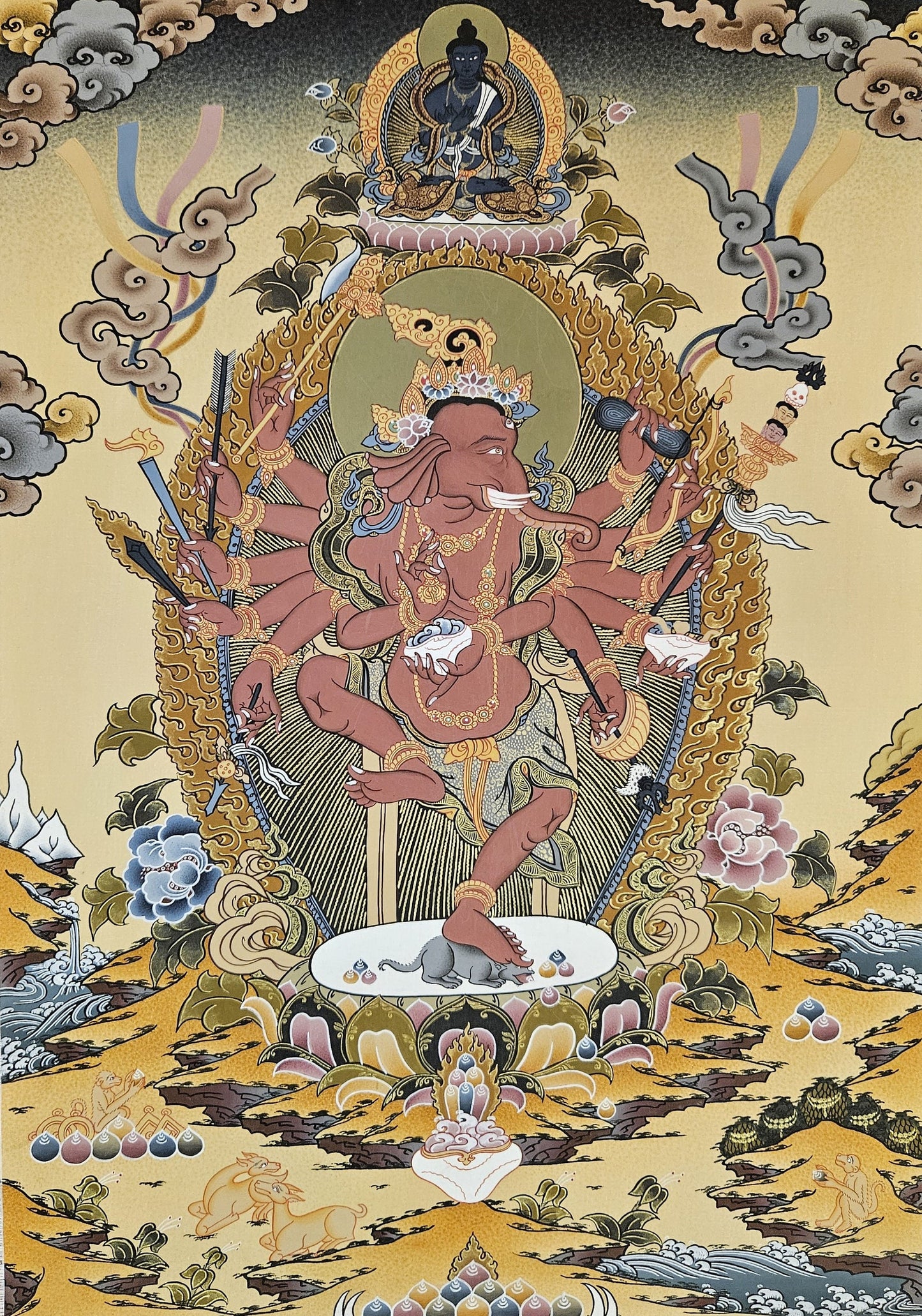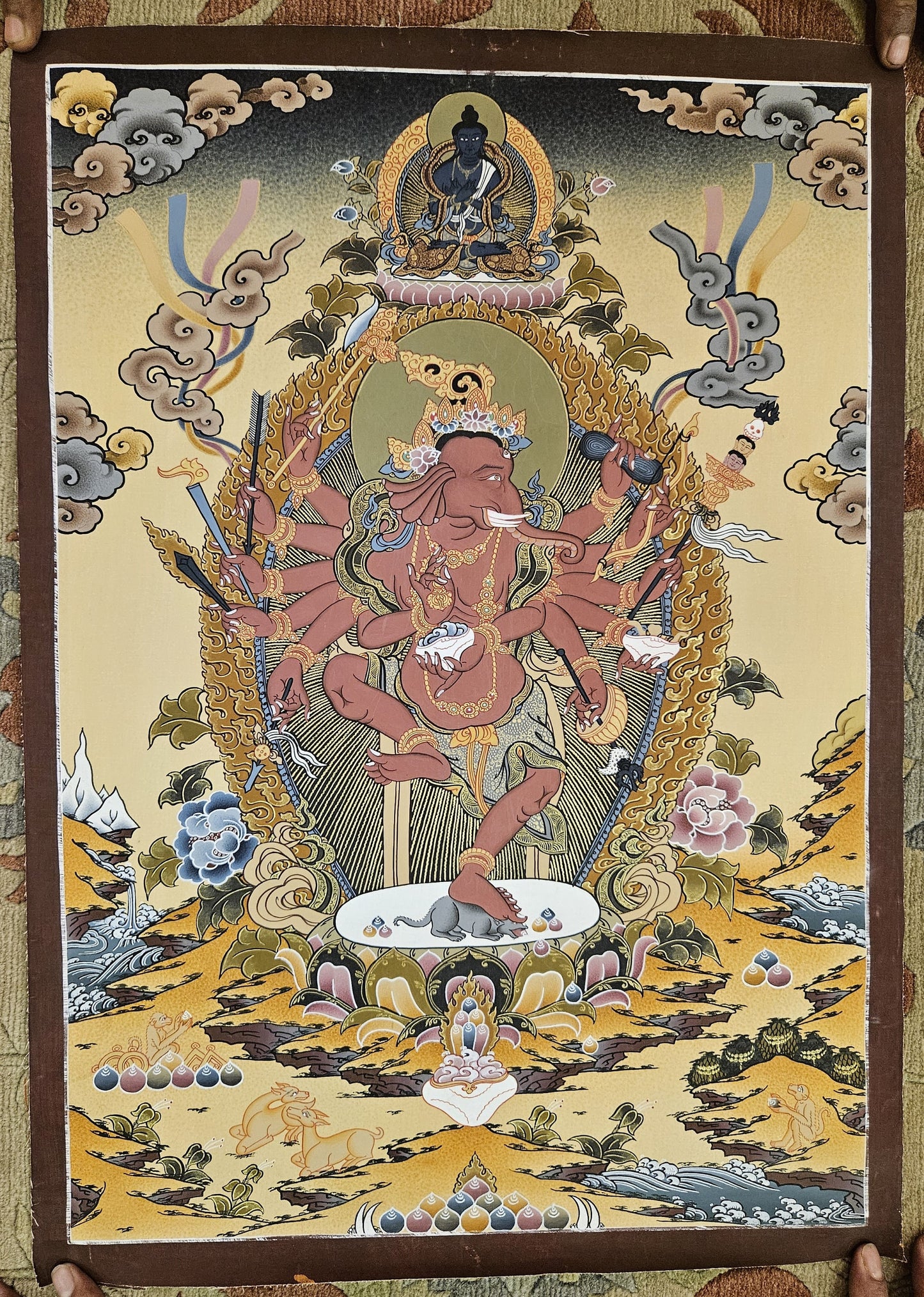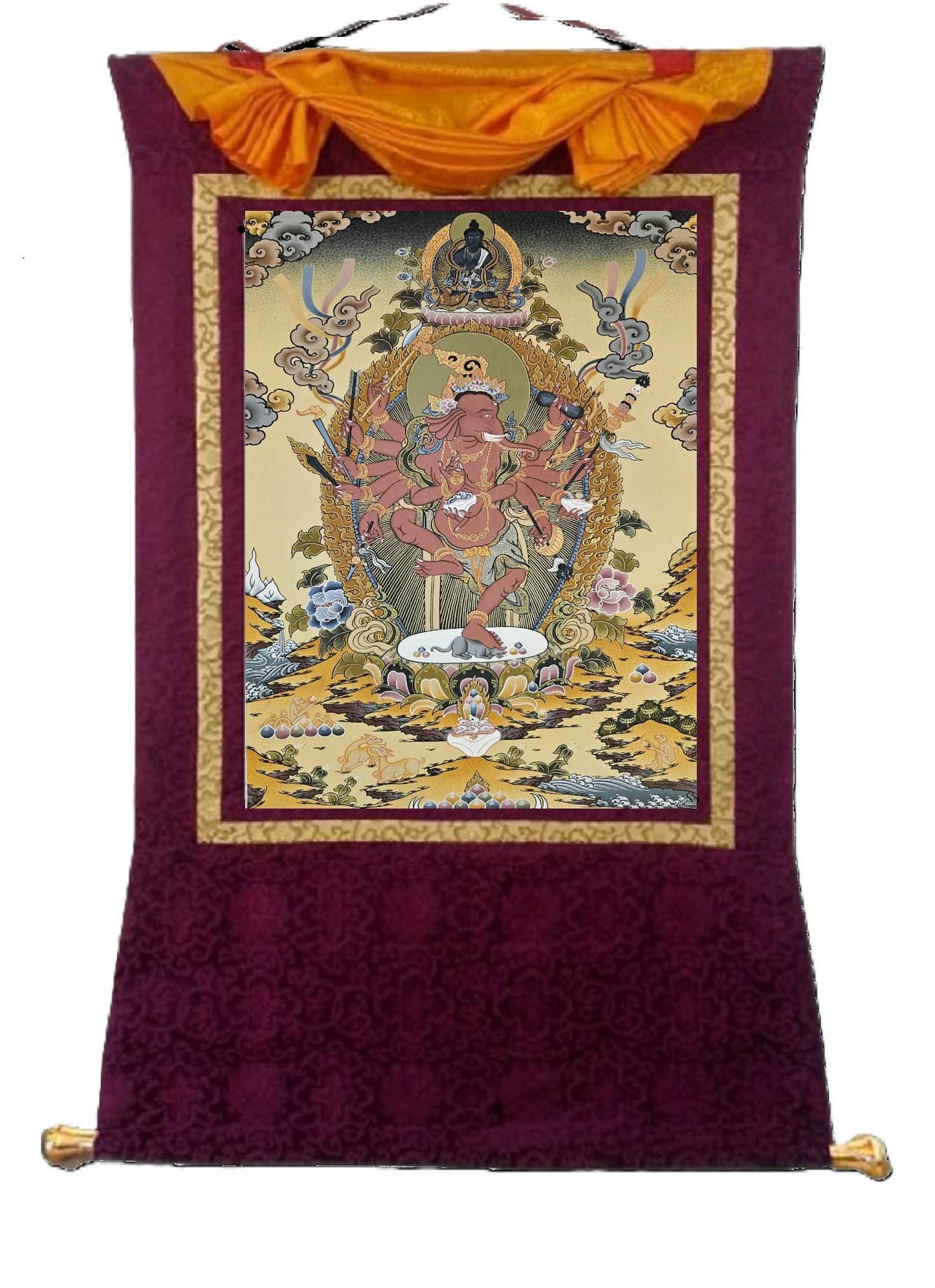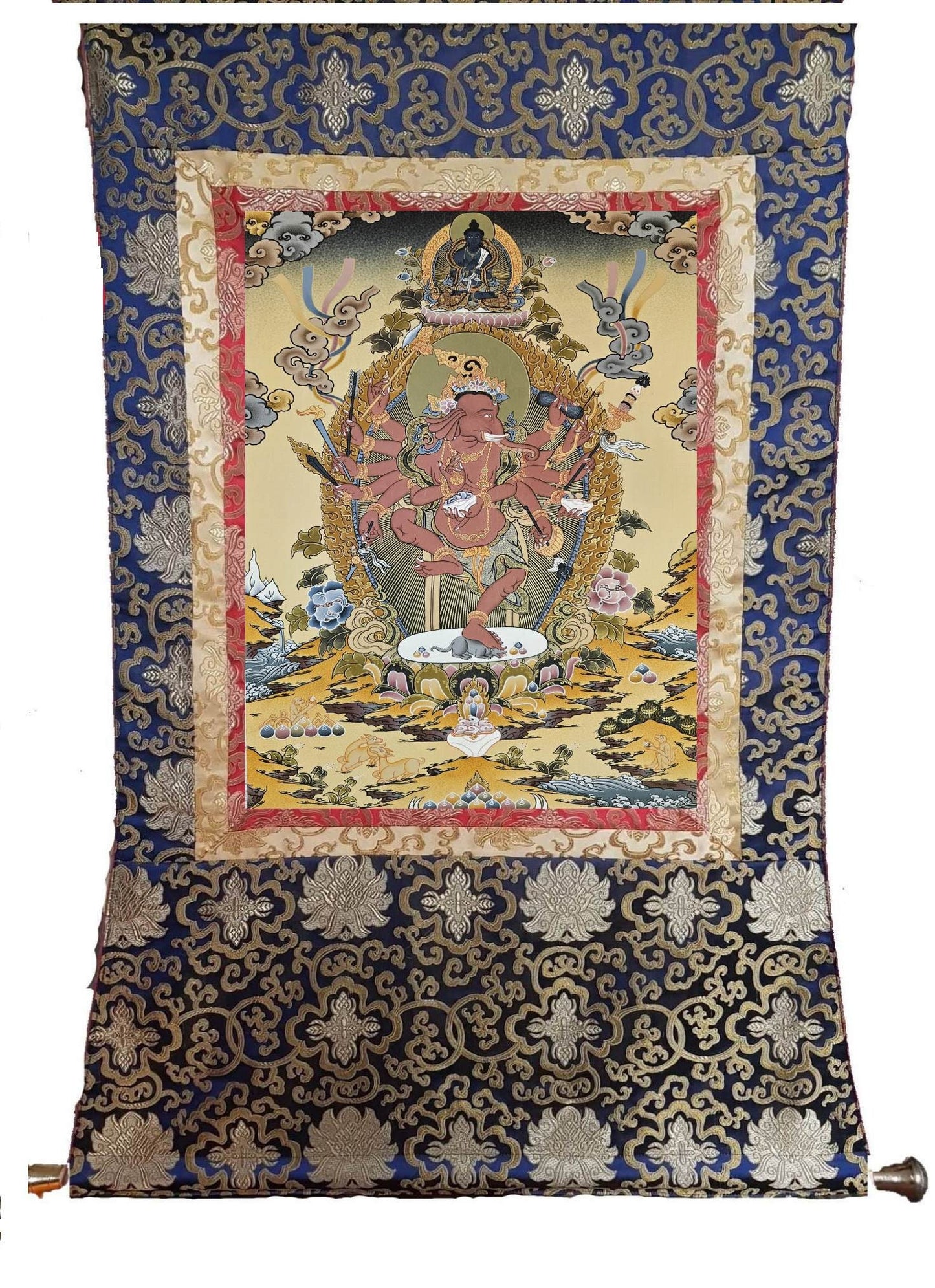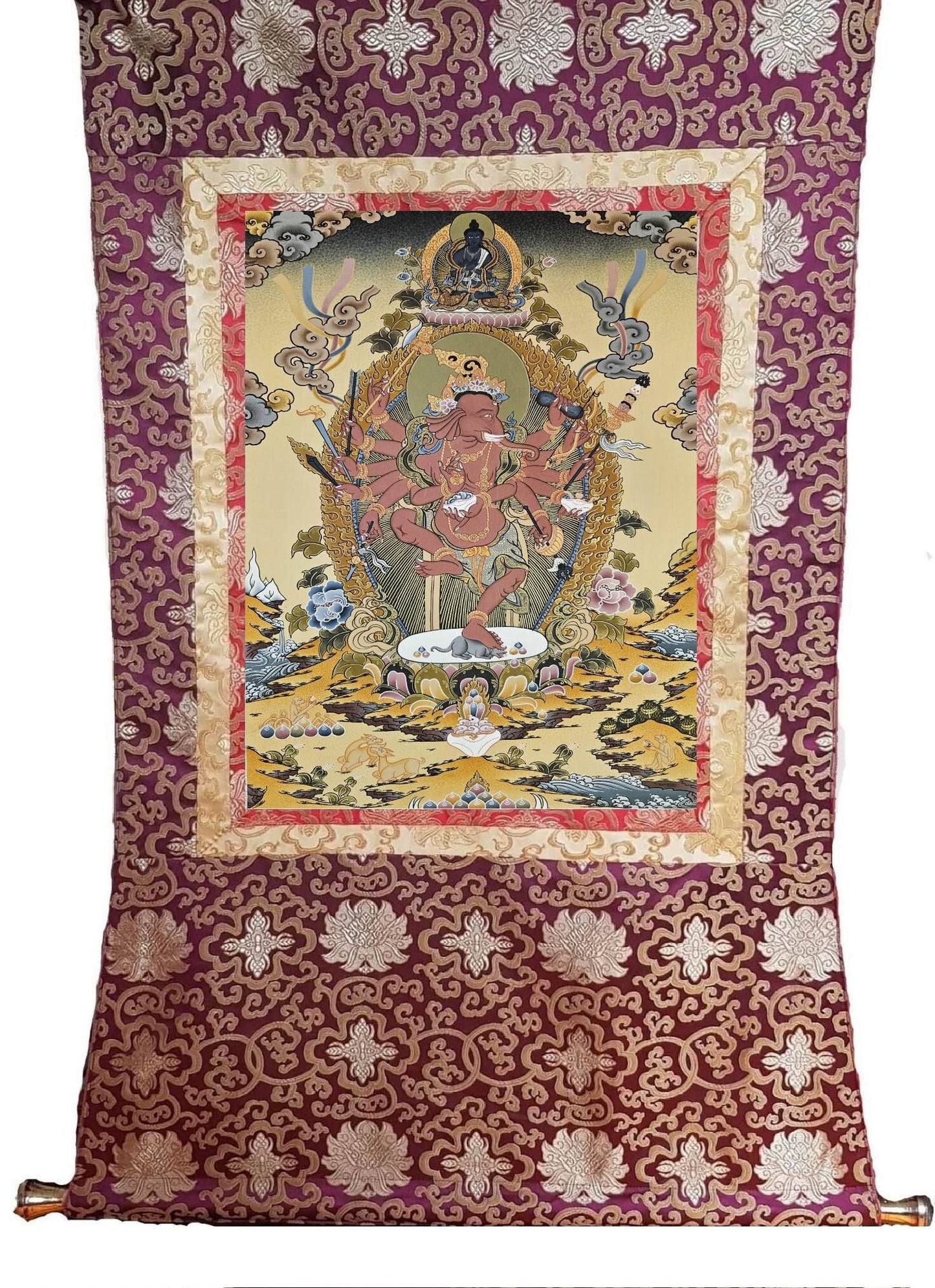1
/
of
6
My Store
331. Buddhist Ganesha (Ganesh) Ganapati Thangka (Thanka). Free Brocade / Free Shipping.
331. Buddhist Ganesha (Ganesh) Ganapati Thangka (Thanka). Free Brocade / Free Shipping.
Regular price
$750.00 USD
Regular price
Sale price
$750.00 USD
Quantity
Couldn't load pickup availability
An Emanation of Avalokiteshvara: Bodhisattva Ganesha
Ganesha is one of the prominent gods in Hinduism. He is referred as Ganapati, Ekadanta, Vinayaka, Pillaiyar and Heramba. He is also highly revered in Buddhism as Lord Ganesha. In Buddhism, he is represented as Vinayaka, a Buddhist deity. Buddhist literature from the Gupta era contains numerous images of him. The dancing posture, sometimes referred to as Nritya Ganapati, is the standard presentation of Vinayaka in his Buddhist form. He is the only Hindu God regarded as a Bodhisattva (Buddha-to-be).
In Buddhism, Ganesha is revered as a guardian and defender. A statue of Lord Ganesha is placed next to the main entrance of the Gelugpa monastery in Tabo, Himachal Pradesh, to protect the complex. The deity in a Mahayana Buddhist temple in Tabo is likewise positioned over a wooden arch.
Gautama Buddha is one of the names of Lord Ganesha, according to the Ganesha Sahasranama of the Ganesha Purana. Ganesha Sahasranama begins with a mention of the name of Buddha. This shows that the writers, who belonged to the Ganapatya Sect, thought highly of this name. Lord Buddha is mentioned as an incarnation of Lord Ganesh in Bhaskararaya's interpretation of the Ganesha Sahasranama. However, the main parts of the Mudgala Purana and the Ganesha Purana do not list Lord Buddha as one of the many incarnations of the Lord. In addition, according to Bhaskararaya, Ganesh is a manifestation of Nityabuddah, or perpetual enlightenment, which is why the god is also known as Buddha.
The first Chakra, or energy wheel, which supports all the other Chakras and stands for survival, materialism, and conservation, is also connected to him. He is a patron of the humanities, social sciences, and literature. He is worshipped, according to devotees, to receive success, prosperity, and protection from harm.
Portrayal of Lord Ganesha in Buddhism
Sadhanamala, a Buddhist scripture, indicates that Lord Ganesha is revered among other Buddhist deities. The elephant-faced deity is shown as having matted hair and a crimson complexion. He has a single elephant head, twelve hands, and a pot belly adorned with precious ornaments.
It's also crucial to understand that the Shaiva Ganesha, son of Parvati and leader of Shiva's legions of devotees, is not the same individual or deity as the Buddhist Ganapati Lord Ganesh. Most frequently, the Tantric Buddhist Ganapati is the Avalokiteshvara, an emanation of Avalokiteshvara. According to the Maharakta story, Avalokiteshvara killed the Shaiva Hindu god Ganesh before chopping off the elephant's head and placing it on his own. This gave him the look of the victorious "evil" Ganesha.
The elephant-headed Lord is portrayed in numerous ways in Tibetan Buddhism. Ganesha is seen in one of the forms being trampled by the Buddhist deity Mahakala. Another representation shows him as the Destroyer of Obstacles. Tantric Buddhism's version of this deity is Maha Rakta Ganapati, or The Great Red Lord of Ganas. It is related to the Tantric Chakrasamvara Cycle. Maha Rakta Ganapati is regarded as the bodhisattva Avalokitesvara's emanation.
Iconic images of Ganesha vary widely, his appearance evolving from that of a straightforward elephant in the first representations to the Ganesha we are familiar with today, who often has the head of an elephant and a massive rotund belly. Usually, he is depicted with four arms; however, there are times when he has two to sixteen. He typically holds his broken tusk in his lower-right hand while in the four-armed position and a laddoo sweet in his lower-left hand, which he consumes with his trunk. The right upper hand holds an ax or goad, and the left upper hand holds a noose.
In a later form, the lower-right hand is directed toward the beholder as a sign of protection and bravery rather than holding the broken tusk (the Abhaya mudra). Depending on the precise symbolism meant by the artist, each object—along with the number of limbs employed to carry them—may differ to include a water lily, mace, discus, rosary, a bowl of sweets, musical instrument, spear, or staff.
Size:
Size without Brocade: 15 inches by 20 inches
Shipping:
We ship within 2 business day.
DHL Shipping: 5 to 8 business days with tracking number.
Insurance against loss.
We do wholesale too.
Our one and only priority in this business is to provide "Hassle free Customer Satisfaction". We have "Quality Products" with "Cheapest Price" in the market.
Please contact us to resolve any issues. Contact us via email before leaving any negative or neutral comments. We promise you that we will resolve any issues.
Please confirm the return address with us before returning the product.
Share
